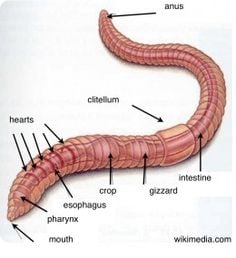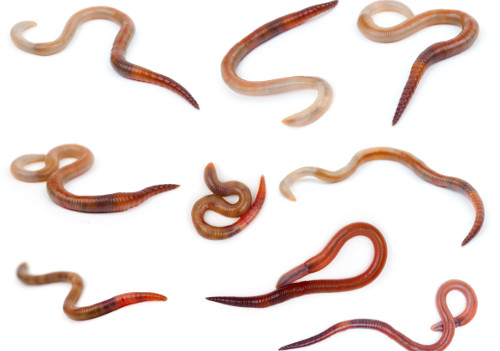Acquire Red Wiggler Worms - Perfect for Composting and Gardening
Wiki Article
Optimizing the Benefits of Red Wiggler Worms: A Comprehensive Manual for Home Gardeners and Urban Farmers
In the world of sustainable gardening methods, red wiggler worms stand as unsung heroes, silently changing organic waste into nutrient-rich spreadings that can function marvels for soil wellness. By checking out the complexities of how to effectively care for and maximize the benefits of red wiggler worms, people can unlock a riches of possibilities for boosting the sustainability and efficiency of their horticulture endeavors.Understanding Red Wiggler Worms
Red Wiggler worms, renowned for their reliable composting capabilities, are a varieties of earthworms extensively utilized in vermiculture methods. These worms, scientifically known as Eisenia fetida, thrive in decaying organic product, making them perfect prospects for composting.One trick feature of Red Wiggler worms is their reproductive rate. These hermaphroditic creatures have both male and female reproductive organs, enabling them to duplicate quickly under positive conditions. A mature Red Wiggler can create multiple children in a brief duration, making sure a constant populace within a composting system.

Setting Up a Worm Bin
When developing a worm bin for vermiculture purposes, proper prep work and focus to information are crucial for developing a conducive setting for Red Wiggler worms,. Begin by selecting a suitable container for your worm container. This can be a plastic or wooden container with a cover to maintain moisture degrees and secure the worms from light. Ensure that the bin has water drainage holes near the bottom to avoid waterlogging.
Location the worm container in an awesome, dark place away from straight sunlight and severe temperature levels. By adhering to these steps, you can establish up a thriving worm container that will efficiently refine natural waste right into nutrient-rich vermicompost for your garden.
Feeding and Preserving Worms
Making sure a well balanced and nutritious diet plan is important for the wellness and performance of Red Wiggler worms in a vermiculture system. Red Wigglers are starved eaters, qualified of eating their own body weight in raw material daily. To preserve a flourishing worm populace, it is necessary to give them with a selection of food scraps such as fruit and veggie peels, coffee grounds, tea bags, and smashed eggshells. Nonetheless, it is necessary to prevent feeding them citrus fruits, onions, garlic, dairy products, meat, and oily foods as these can be hazardous to the worms or cause unpleasant smells in the container.Appropriate moisture degrees are additionally essential for the wellness of Red Wiggler worms. The bed linens must really feel like a moist sponge, giving adequate dampness for the worms to take a breath through their skin. Regularly examine the moisture levels and readjust by adding water or dry bed linen material as needed. Additionally, keeping correct temperature conditions in between 55-77 ° F(13-25 ° C )will certainly guarantee optimal worm activity and recreation. By diligently checking their diet regimen, dampness, and environmental conditions, home gardeners and urban farmers can sustain a effective and healthy and balanced Red Wiggler worm population for composting functions.
Collecting Worm Castings
To effectively extract nutrient-rich worm spreadings from the vermicompost, a systematic harvesting process is vital for making the Go Here most of the composting benefits. The initial action in gathering worm castings is to motivate the worms to migrate to one side of the bin.After the spreadings have actually been gathered, it is important to divide any staying worms from the spreadings to avoid damaging them throughout storage or application. One efficient method is to produce conical stacks of castings under brilliant light. Worms will intuitively relocate far from the light, permitting simple separation and elimination.
Last but not least, the harvested worm castings ought to be saved in an awesome, dark, and dry place to preserve their top quality and effectiveness as a nutrient-rich dirt modification. By adhering to these actions, home gardeners and city farmers can take full advantage of the benefits of red wiggler worms in their vermicomposting systems.
Utilizing Worm Castings in Horticulture
The consolidation of nutrient-rich worm castings into yard soil can substantially boost plant development and total dirt wellness. Worm spreadings, likewise known as vermicast, are a natural fertilizer generated by red wiggler worms as they damage down raw material. These spreadings are abundant in important nutrients like nitrogen, phosphorus, potassium, and beneficial microbes that advertise plant growth and improve dirt structure.When making use of worm spreadings in horticulture, it is crucial to mix them thoroughly right into the dirt or utilize them as a top dressing around plants. The slow-release nature of worm spreadings guarantees a steady supply of nutrients to plants in time, lowering the threat of nutrient leaching and advertising long-term dirt fertility. In addition, worm castings help improve soil oygenation, water retention, and microbial activity, developing a healthy and balanced setting for plant origins to grow.

discover this info here
Conclusion
Finally, the application of red wiggler worms in home horticulture and metropolitan farming can dramatically benefit dirt health and plant development. By comprehending how to set up and maintain a worm bin, feed the worms appropriately, and collect their nutrient-rich castings, gardeners can optimize the benefits of these earthworms. Including worm castings right into horticulture techniques can enhance soil fertility and overall plant performance. Generally, red wiggler worms use a sustainable and efficient option for enhancing garden and farm yields.In the realm of sustainable horticulture techniques, red wiggler worms stand as unrecognized heroes, silently transforming organic waste right into nutrient-rich castings that can work marvels for soil wellness.When developing a worm bin for vermiculture objectives, appropriate preparation and interest to information are essential for creating a conducive atmosphere for Red Wiggler worms. The first step in collecting worm spreadings is to encourage the worms to migrate to one side of the bin. Worm castings, also known as vermicast, are a natural fertilizer produced by red wiggler worms as they Resources damage down natural matter. By comprehending exactly how to set up and maintain a worm bin, feed the worms appropriately, and harvest their nutrient-rich spreadings, garden enthusiasts can take full advantage of the benefits of these earthworms.
Report this wiki page